Texas is known for its sunny weather, and while it’s wonderful for many crops, it can be a challenge to grow vegetables in the shade. But with a bit of planning and the right knowledge, it’s possible to grow a variety of vegetables that thrive in the shade.
Texas gets hot during summer, which makes planting in shady areas a perfect option to ensure your veggies don’t dry out.
Read on to explore some of the most delicious and best vegetables you can grow in the shade in Texas and how to do it successfully. Check out this article if you are planning to start a garden; here are 5 things you need to know.
1- Lettuce (Lactuca sativa)
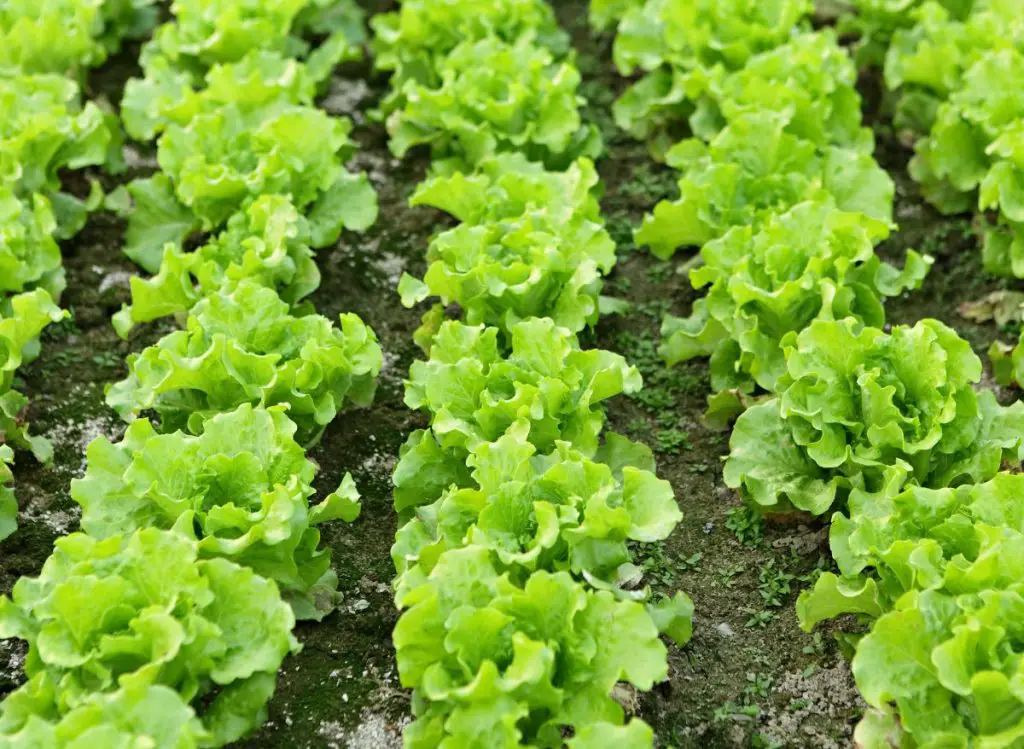
The lush green color and crisp texture make lettuce a popular vegetable for summer salads. And the best part? Lettuce grows well in the shade. You can grow both loose-leaf and head lettuce varieties in shady areas, and they’ll still thrive.
I encourage you to read this article if you wonder how much light lettuce needs to grow indoors. It is important to keep the soil moisture consistently to ensure the lettuce stays tender and sweet.
The table below contains lettuce growth characteristics:Botanical Name Lactuca sativa Common names – Butterheads
– Cos
– Head Lettuce
– Romaines
– Lactuca
– Lettuce
– Leaf LettuceFamily Asteraceae Growth Rate Rapid Mature size – Height: 0. 6 to 1 foot (18.29 to 30.48 cm)
– Width: 0.6 to 1 foot (18.29 to 30.48 cm)Sunlight Requirement – Lettuce grows well in partial shade, with about 2 to 6 hours of direct sunlight.
– Full sun with at least 6 hours of direct sunlight daily.Maintenance Requirements Medium Soil Drainage Lettuce prefers soils with good drainage or moist Soil pH Requirements Lettuce does well in neutral pH levels between 6.0 to 8.0 Potential Problems Aphids, armyworms, imported cabbage worms, and loopers attack lettuce. USDA Plant Hardiness Zone 2 to 11
2- Spinach (Spinacia oleracea)
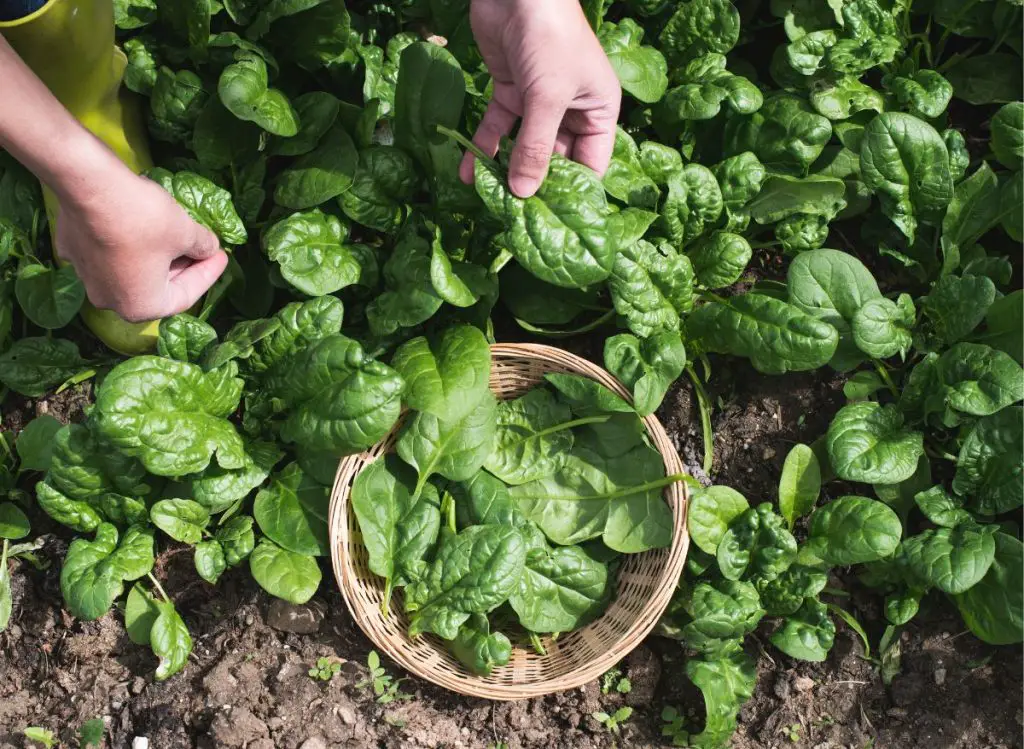
Spinach (Spinacia oleracea) is nutrient-dense and makes an excellent addition to salads, smoothies, and cooking recipes. Spinach is known for growing well in the shade.
It is recommended to plant spinach from mid-September through the end of February. And even though spinach tolerates partial shade, but grows best in full sun (Source: The University of Arizona)
You can harvest spinach all through the growing season by planting a few seeds every few weeks.
The table below contains spinach growth characteristics.Botanical Name Spinacia oleracea Common names – Spinach (English)
– Hispane (Arabic)
– Épinard (French)
– Spinace (Italian)
– Spinat (German)
– Espinaca (Spanish)Family Amaranthaceae Growth Rate Rapid Mature size
– Height: 0. 6 to 1 foot (18.29 to 30.48 cm)
– Width: 0.6 to 1 foot (18.29 to 30.48 cm)Sunlight Requirement – Spinach thrives in partial shade, with about 2 to 6 hours of direct sunlight.
– Full sun with at least 6 hours of direct sunlight daily.Maintenance Requirements Medium Soil Drainage Spinach prefers soils with good drainage or moist. Soil pH Requirements Between 6.0 to 8.0 Potential Problems – Nematodes
– Aphids
– Cucumber beetle
– Wireworms
– Cabbage loopersUSDA Plant Hardiness Zone 2 to 11
3- Arugula (Eruca vesicaria)
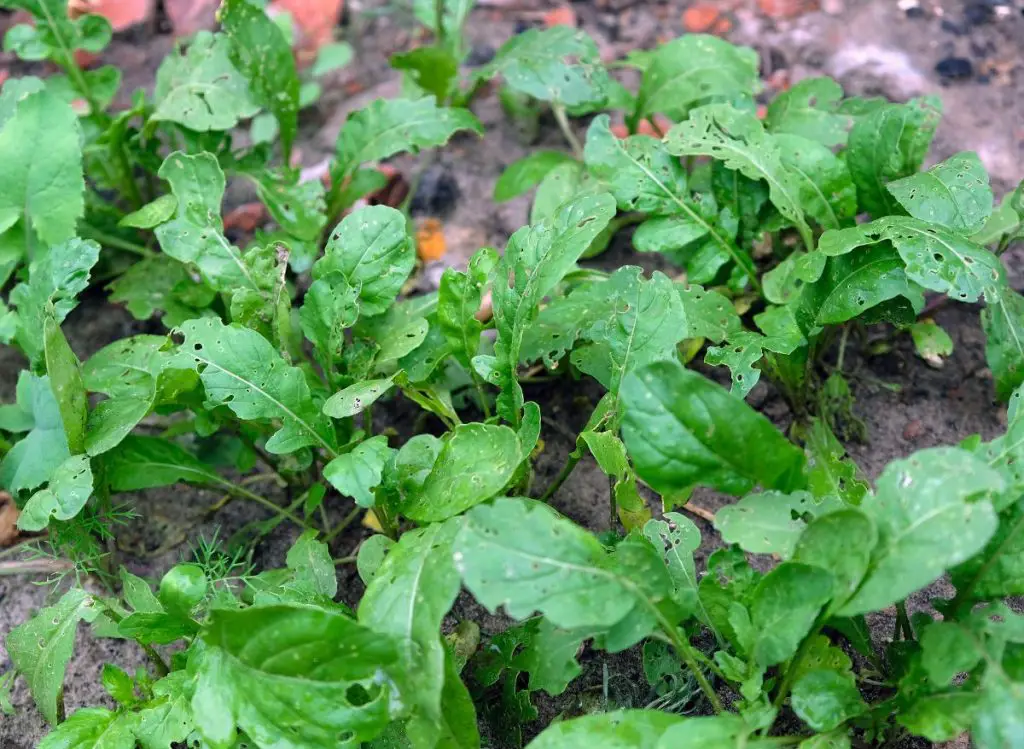
Arugula (Eruca vesicaria) is often used as a salad green that adds a peppery taste to the mix. It is easy to grow in the shade and is ready for harvest in about a month.
It does well in moisture-consistent soil, and you have to be careful not to overwater it.
The table below shows Arugula growth characteristics.
| Botanical Name | Eruca vesicaria |
| Common names | – Arugula – Ruchtetta – Garden Rocket – Mediterranean Salad – Eruca – Rugulas – Gharghir – Rocket – Roquette – Rocket Salad – Rucola – Rucoli |
| Family | Brassicaceae |
| Growth Rate | Rapid |
| Mature size | Height: 0.8 to 3 feet (24.38 to 91.44 cm) Width: 0.8 to 1.6 feet (24.38 to 48.77 cm) |
| Sunlight Requirement | – Arugula thrives in partial shade, with about 2 to 6 hours of direct sunlight. – Full sun with at least 6 hours of direct sunlight daily. |
| Maintenance Requirements | Medium |
| Soil Drainage | Arugula does well in occasionally wet soils with good drainage or moisture. |
| Best soil type | – Clay – Sandy soils – Loam (Silt) |
| Soil pH Requirements | Between 6.0 to 8.0 |
| Potential Problems | Flea beetles and aphids may cause problems for arugula. |
| USDA Plant Hardiness Zone | Between 2 to 11 |
4- Beets (Beta vulgaris)
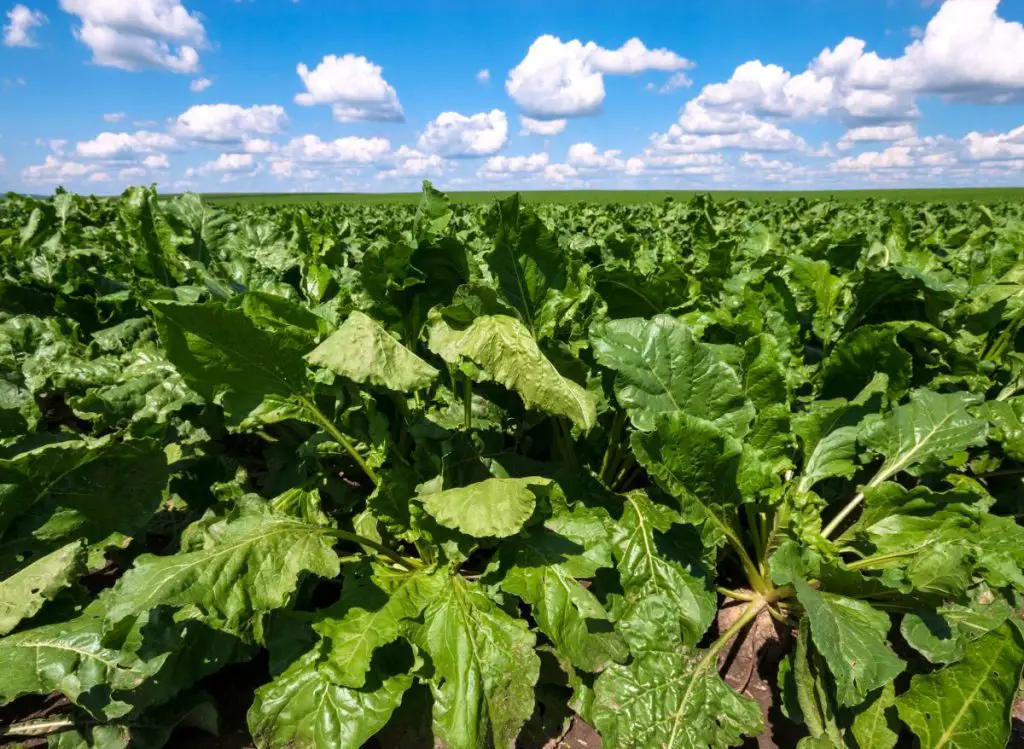
Beets (Beta vulgaris) are root vegetables that are great for growing in the shade. They don’t need as much sunlight as some other crops and can tolerate cooler temperatures.
I suggest you plant them in soil that’s well-draining and keep the soil moist but not waterlogged. Beet leaves need sunlight to grow, but the root itself thrives well in partial shade.
The good news is that beets are rich in vitamins and minerals, including folate, manganese, and potassium, and are a great addition to soups, stews, and salads.
The table below contains beets’ growth characteristics:
| Botanical Name | Beta vulgaris |
| Common names | – Beet – Garden beet |
| Family | Amaranthaceae |
| Growth Rate | Medium |
| Mature size | Height: 1.00 to 1.50 feet (0.30 to 0.46 cm) Spread: 1.50 to 2.00 feet (0.46 to 0.61 cm) |
| Sunlight Requirement | Beets prefer full sun to part shade |
| Maintenance Requirements | Low |
| Soil Drainage | Beets thrive in fertile, moist, and well-drained soils |
| Best soil type | Organically rich, and light to sandy |
| Soil pH Requirements | Between 5.30 to 6.60 |
| Potential Problems | – Leaf miners – Leafhoppers – Flea beetles – Aphids – And caterpillars. |
| USDA Plant Hardiness Zone | 2 to 11 |
5- Broccoli (Brassica oleracea (Italica Group))
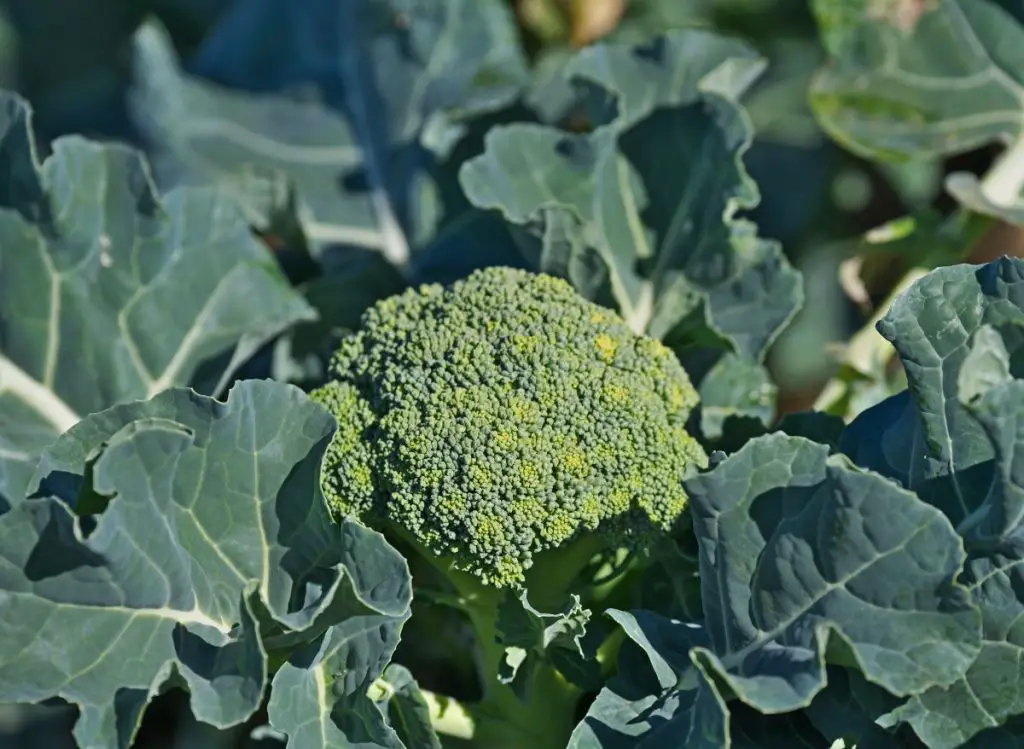
Broccoli (Brassica oleracea (Italica Group)) is a cruciferous vegetable that grows in moist, well-drained soil.
It does well in partial shade conditions, and it is important to maintain adequate soil moisture. Plant broccoli in the fall or early spring for the best results. Check out this article on how to grow broccoli Indoors.
The table below contains Broccoli plants’ growth characteristics:Botanical Name Brassica oleracea (Italica Group) Common names – Broccoli
– Sprouting Broccoli
– Purple SproutingFamily Brassicaceae Growth Rate Medium Mature size – Height: 1.6 to 2 feet (0.49 to 0.61 cm)
– Width: 1 to 2 feet (0.30 to 0.61 cm)Sunlight Requirement Broccoli prefer full sun with a minimum of 6 hours of direct sunlight per day. Maintenance Requirements Low Soil Drainage Broccoli thrives in organically rich, well-composted, consistently moist, well-drained soils (Source: Missouri Botanical Garden) Best soil type Loamy soils (Silt) Soil pH Requirements Between 6.0 to 8.0 Potential Problems – Cabbage loopers
– Slugs
– Cabbage worms
– Aphids
– CaterpillarsUSDA Plant Hardiness Zone Between 2 to 11
6- Cauliflower (Brassica oleracea (Botrytis Group))
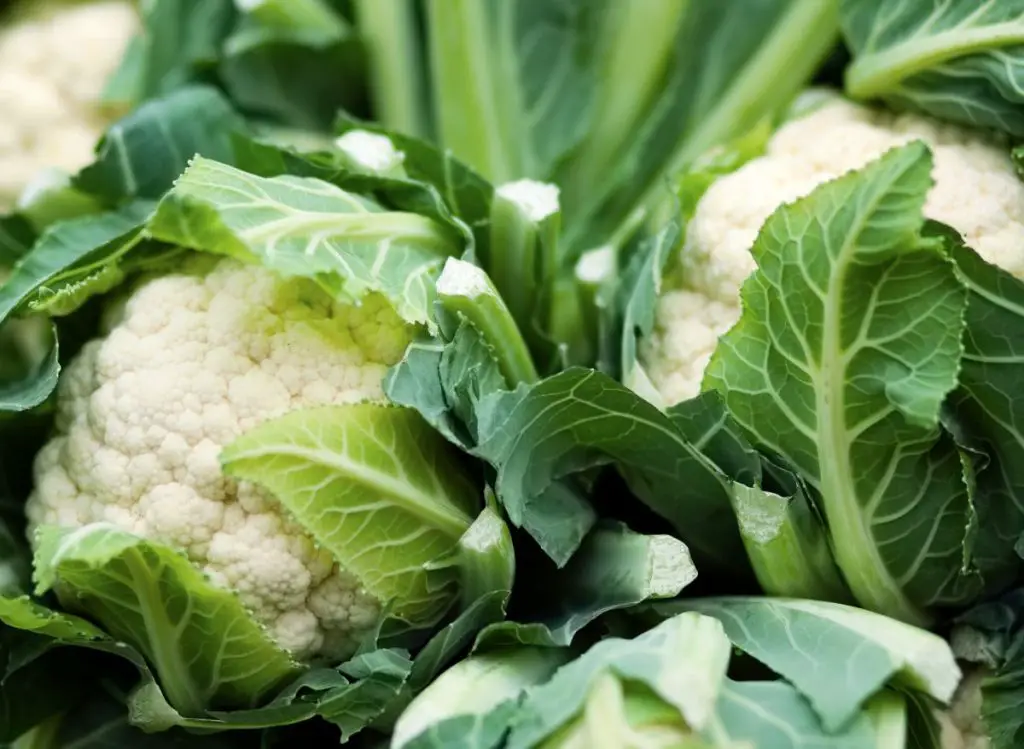
Cauliflower (Brassica oleracea (Botrytis Group)) is another cruciferous vegetable that loves cooler temperatures and moist soil.
Generally, cauliflower does well in partial shade conditions and requires consistent moisture to avoid bitterness. Ensure the soil bed is well-drained but kept consistently moist.
The table below shows Cauliflower plants’ growth characteristicsBotanical Name Brassica oleracea (Botrytis Group) Common names – Broccoflower
– Romanesco broccoli
– Calabrese
– CauliflowerFamily Brassicaceae Growth Rate Medium Mature size Height: 1 to 1.6 feet (0.30 to 0.49 cm)
Width: 1 to 2 feet (0.30 to 0.61 cm)Sunlight Requirement Cauliflower does best in full sun, with at least 6 hours of direct sunlight per day. Maintenance Requirements Medium Soil Drainage Cauliflower does best in organically rich, well-drained, fertile (high in nitrogen), consistently moist, well-composted soils. (Source: Missouri Botanical Garden) Best soil type Loamy soils type (Silt) Soil pH Requirements Between 6.0 to 8.0 Potential Problems – Slugs
– Cabbage worms
– Aphids
– And caterpillarsUSDA Plant Hardiness Zone 2 to 11
7- Swiss Chard (Beta vulgaris L. var. cicla)
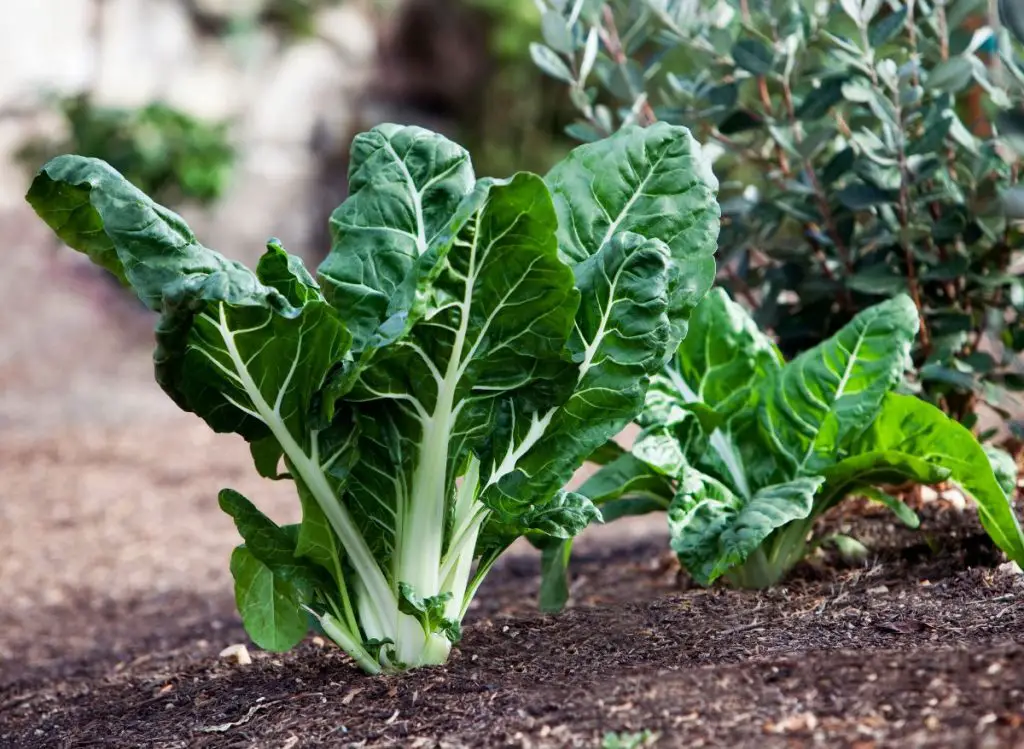
Swiss chard (Beta vulgaris L. var. cicla) is a leafy vegetable that adds color to any dish. It is easy to grow in partial shade, and the different colors mean a diversified harvest.
Swiss chard needs consistent moisture to thrive, and it is best to pick the leaves from the bottom rather than cutting the entire plant.
The table below shows Swiss Chard plants’ growth characteristics.Botanical Name Beta vulgaris L. var. cicla Common names – Swiss chard
– Stem chard
– Spinach beet
– Silverbeet
– Perpetual spinach
– Bright lights
– Crab beet
– Leaf beet
– Seakale beetFamily Chenopodiaceae Mature size Height: 18 to 24 Inches ( 45.72 to 60.96 cm)
Width: 9 to 12 inches (22.86 to 30.48 cm)Sunlight Requirement Full sun to partial shade Maintenance Requirements Medium Soil Drainage Swiss chard does best in rich, moist, and well-drained soils Potential Problems – To prevent leaf-miner infestations, it is recommended to plant Swiss chard in an area far from spinach and beets and also where spinach, beets, and chard have not been grown for two years (Source: Colorado State University Extension)
– Cercospora leaf spots can cause light brown patches.Soil pH Requirements Slightly acidic between 6 to 6.4) USDA Plant Hardiness Zone – As a biennial between 6 to 10
– As an annual between 3 to 10
8- Carrots (Daucus carota)
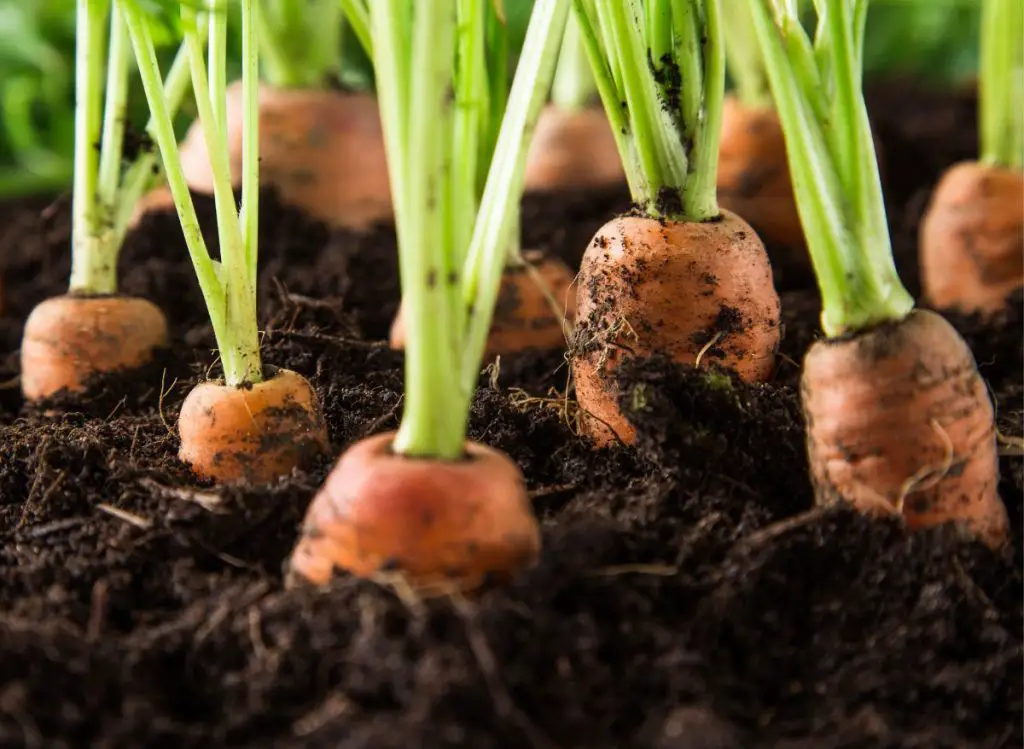
Carrots (Daucus carota) are another root vegetable that can thrive in the shade. While they do need a bit of sunlight to germinate, they can grow well in partially shaded areas.
It is recommended to plant them in fertile, well-draining soil and keep the soil consistently moist. Carrots are loaded with vitamins and minerals, including vitamin A, potassium, and fiber, and are a great snack or addition to stir-fries.
Read this article; you plan to grow carrots hydroponically. The table below shows carrot plants’ growth characteristics:
| Botanical Name | Daucus carota |
| Common names | – Carrot – Garden Carrot – Carrot Flower |
| Family | Apiaceae |
| Growth Rate | Medium |
| Mature size | – Height: 0.3 to 3 feet (9.14 to 91.4 cm) – Width: 0.2 to 0.3 feet (6.0 to 9.14 cm) |
| Sunlight Requirement | – Carrots do best in partial shade, with about 2 to 6 hours of direct sunlight. – Full sun with at least 6 hours of direct sunlight daily. |
| Maintenance Requirements | Low |
| Soil Drainage | Carrots prefers soils with good drainage or moisture. |
| Best soil type | Carrots thrive in loamy and sandy soils |
| Soil pH Requirements | Between 6.0 to 8.0 |
| Potential Problems | – Carrot rust flies – Aphids – Leafhoppers, – Leaf miners – Slugs – Flea beetles – Weevils – Caterpillars |
| USDA Plant Hardiness Zone | 2 to 11 |
9- Peppers (Capsicum annuum (Grossum Group))
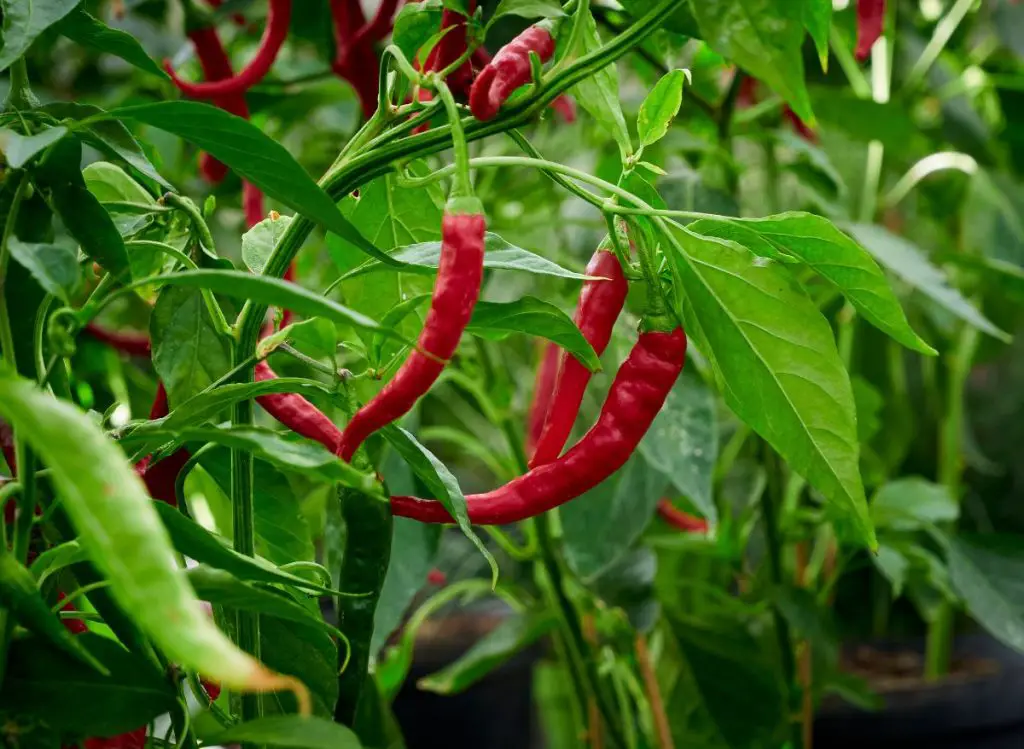
Peppers (Capsicum annuum (Grossum Group)) are a great crop to grow in the shade, especially if you’re in a hot region like Texas.
The good news is that peppers can tolerate some shade, and too much direct sunlight can actually damage the plant. Peppers need well-draining soil and consistent moisture, but be careful not to overwater them.
I encourage you to read this article if you wonder whether you can grow peppers in indirect sunlight. Peppers are high in vitamin C and can add some spice to your meals. The table below shows peppers plants’ growth characteristics:Botanical Name Capsicum annuum (Grossum Group) Common names – Bell Pepper
– Sweet Pepper
– Green Pepper
– Red PepperFamily Solanaceae Growth Rate Slow Mature size – Height: 0.6 to 5 feet (18.29 to 152.4 cm)
– Width: 1 to 3 feet (30.48 to 91.44)Sunlight Requirement Pepper plants prefer full sun with at least 6 hours of direct sunlight a day. Maintenance Requirements Medium Soil Drainage Pepper plants prefer soils with good drainage or moisture. Best soil type Pepper grows best in loamy and sandy soils Soil pH Requirements – Soil pH below 6
– Between 6 to 8Potential Problems – Whiteflies
– Beet armyworms
– Thrips
– Cutworms
– Aphids
– Red spider mites
– Tomato fruit worms
– Flea beetles
– Leafrollers
– Weevils
– And tomato psyllid. USDA Plant Hardiness Zone 9 to 11
What to read next:
- Can Tomatoes Grow In Indirect Sunlight: a definite Answer!
- Best Tips On How To Speed Up Pepper Seed Germination.
- Best Ways To Prepare Soil For Planting Vegetables.
- Top 16 Best Vegetable Gardening Books For Beginners.
Wrapping Up
Growing vegetables in the shade in Texas is possible as long as you choose the right crops and give them the right growing conditions. Remember to maintain moisture consistency in the soil, especially when the temperatures start to rise during summer.
Leafy greens, broccoli, cauliflower, beets, carrots, and peppers are just a few examples of vegetables that can thrive in partially shaded areas.
I believe that by understanding the needs of each plant and adapting your growing techniques, you can enjoy a bountiful harvest of fresh, healthy veggies no matter how much shade your garden gets.

